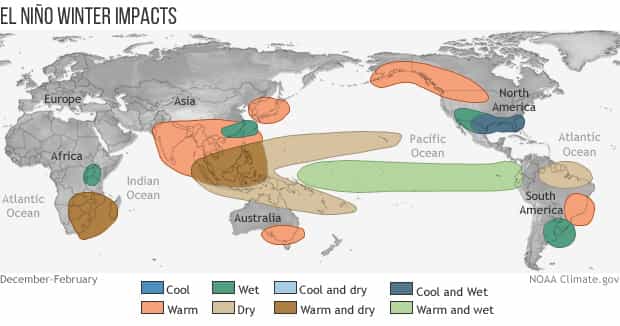
El Niño is currently purring along in the tropical Pacific. Forecasters expect El Niño will continue through the spring, with a 75-85% chance it will become a strong event. A stronger El Niño—definition to follow shortly—means it is more likely that we will see El Niño’s expected thumbprint on winter temperature and rain/snow patterns around the world.
The tiger’s stripes
First, the numbers. Our primary metric for the growth of El Niño is the temperature of the ocean surface in the Niño-3.4 region, a box in the central-eastern equatorial Pacific. Specifically, the anomaly, the difference of this temperature from the long-term average (long-term = 1991–2020). (Why here? Several decades ago, this region was found to have the strongest relationship with tropical atmospheric changes.) In September, the Niño-3.4 Index was 1.6 °C (2.9 °F), according to the ERSSTv5, our most reliable sea surface temperature dataset.
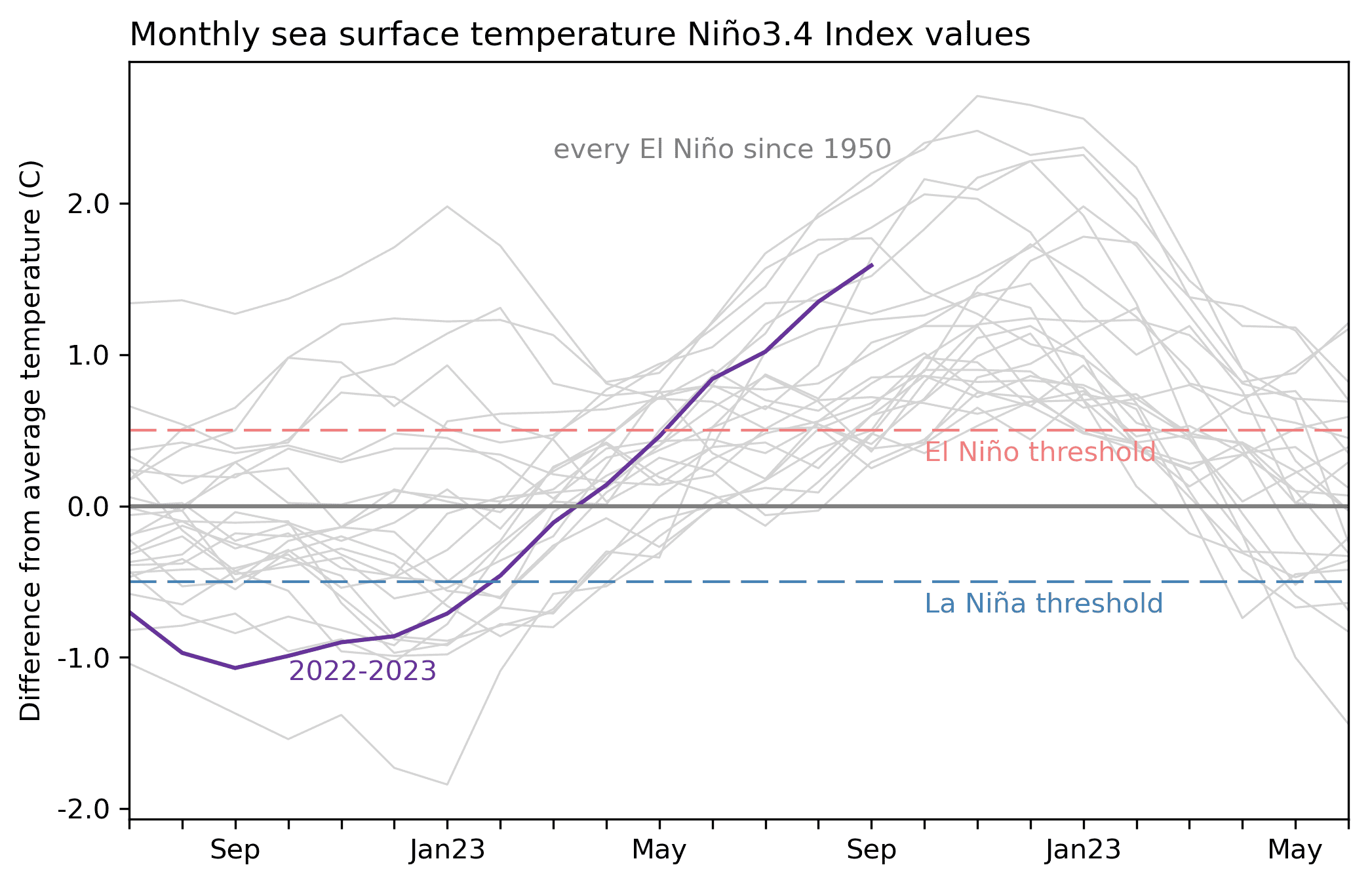
El Niño is a coupled system, meaning the ocean and the tropical atmosphere are working together to continue and grow the El Niño event. The average air circulation pattern over the tropical Pacific, called the Walker circulation, brings rising air, clouds, and storms over the very warm water of the far western Pacific, west-to-east winds high up in the atmosphere, descending air over the eastern Pacific, and the east-to-west surface winds called the trade winds. In the case of El Niño, the warmer-than-average surface water in the central-eastern Pacific leads to more rising air over that region, weakening the Walker circulation.
The atmospheric half of El Niño is clearly showing its stripes. All the signs of a weakened Walker circulation are present, including more rain and clouds over the central-eastern Pacific, slower trade winds and upper-level winds, and drier conditions in Indonesia and the far western Pacific. Taken collectively, the ocean surface and the atmospheric conditions tell us that El Niño will stick around for the next few months at least.
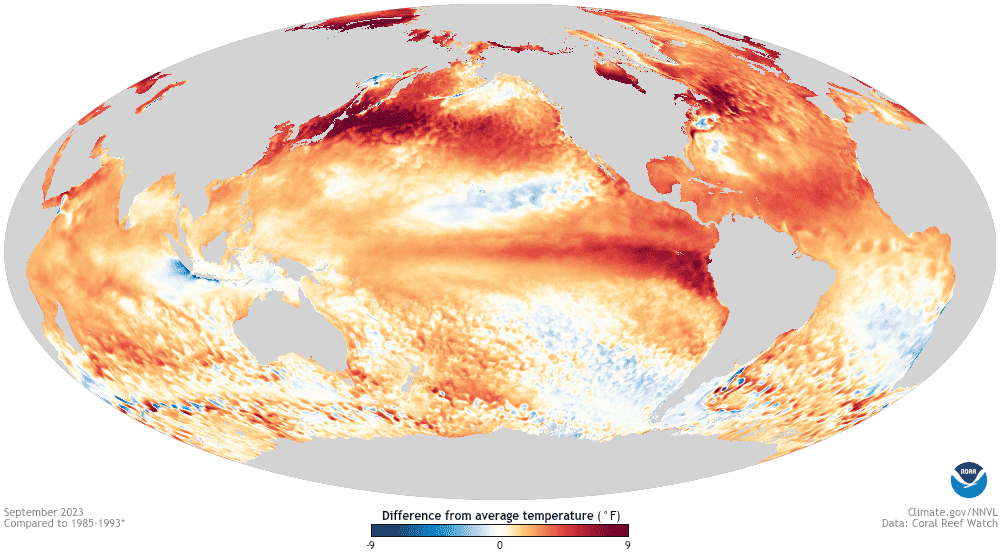
The lion’s roar
Since we’re sure El Niño will be operating into the winter, the next question is “how strong will it get?” Strength definitions, which usually also use the Niño-3.4 Index, are unofficial, since it’s not like an El Niño with a peak Niño-3.4 Index of 1.5 °C is going to have noticeably different impacts than one with a peak Niño-3.4 Index of 1.4 °C. However, as I mentioned above, the stronger the El Niño, the more likely it will affect global temperature and rain/snow patterns in expected ways. This is because a larger sea surface temperature change leads to a larger shift in the Walker circulation, making it more likely that El Niño will affect the jet stream and cause a cascade of global impacts.
The unofficial definition of a strong El Niño is a peak 3-month-average Niño-3.4 Index of at least 1.5 °C. El Niño is a seasonal phenomenon, and that 3-month-average Niño-3.4 Index (called the Oceanic Niño Index or ONI) is important for making sure that the oceanic and atmospheric changes persist long enough to affect global weather and climate. A peak ONI of 2.0 °C or more is considered “historically strong” or “very strong.” We’ve only seen four of these in our historical record, dating back to 1950.
Forecasters give this event a high chance of qualifying as a strong event based on our climate model predictions and the current conditions. “Hey, wait,” you’re saying. “Isn’t the September Niño-3.4 Index already 1.6 °C?” And indeed it is, but the 3-month average for July–September was 1.3 °C. That said, we have a 75% chance that the ONI will reach or exceed 1.5 °C in November–January (typically the peak season). We actually have a slightly higher chance, 83%, that we will reach that threshold in September-November, which is on our doorstep.
So how about peaking at or above 2.0 °C? Forecasters give that around a 3-in-10 chance for November–January. The climate models have a fairly wide range of potential outcomes—if they were concentrated above 2.0 °C, we’d probably be able to give more confident chances. Also, while there is still a good amount of heat under the surface of the Pacific—this warmer water provides a source to the surface—it’s not quite at the level we’ve seen during previous historically strong El Niños like 1982–83, 1997–98, or 2015–16.
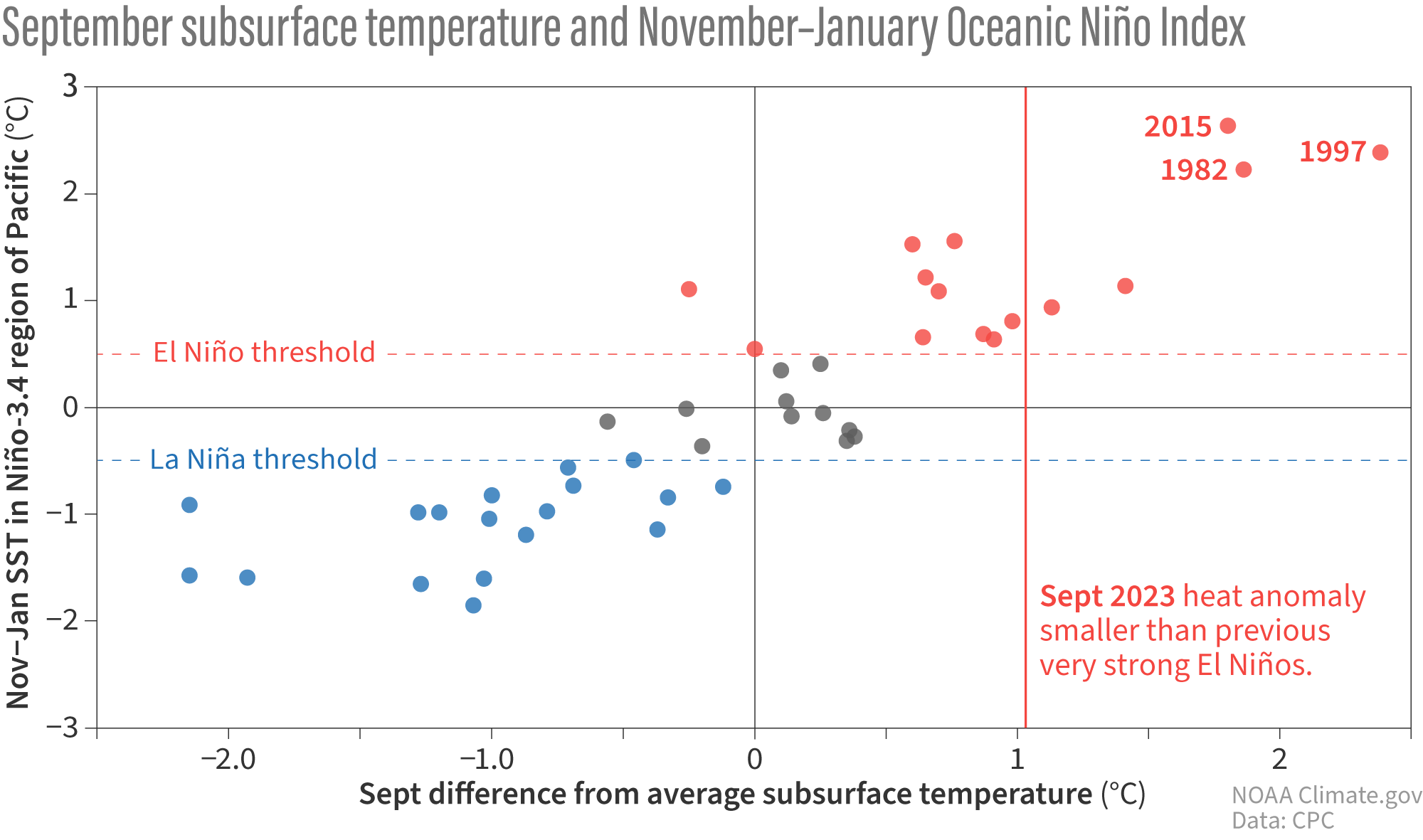
This is a small sample of very strong events, though, and the current moderate subsurface temperature certainly doesn’t preclude this event peaking above 2.0 °C. It just contributes to a tempering of the odds.
The leopard’s spots
One more thing I wanted to cover this month—the temperature of the global oceans is still running way above average, with startling records in recent months.
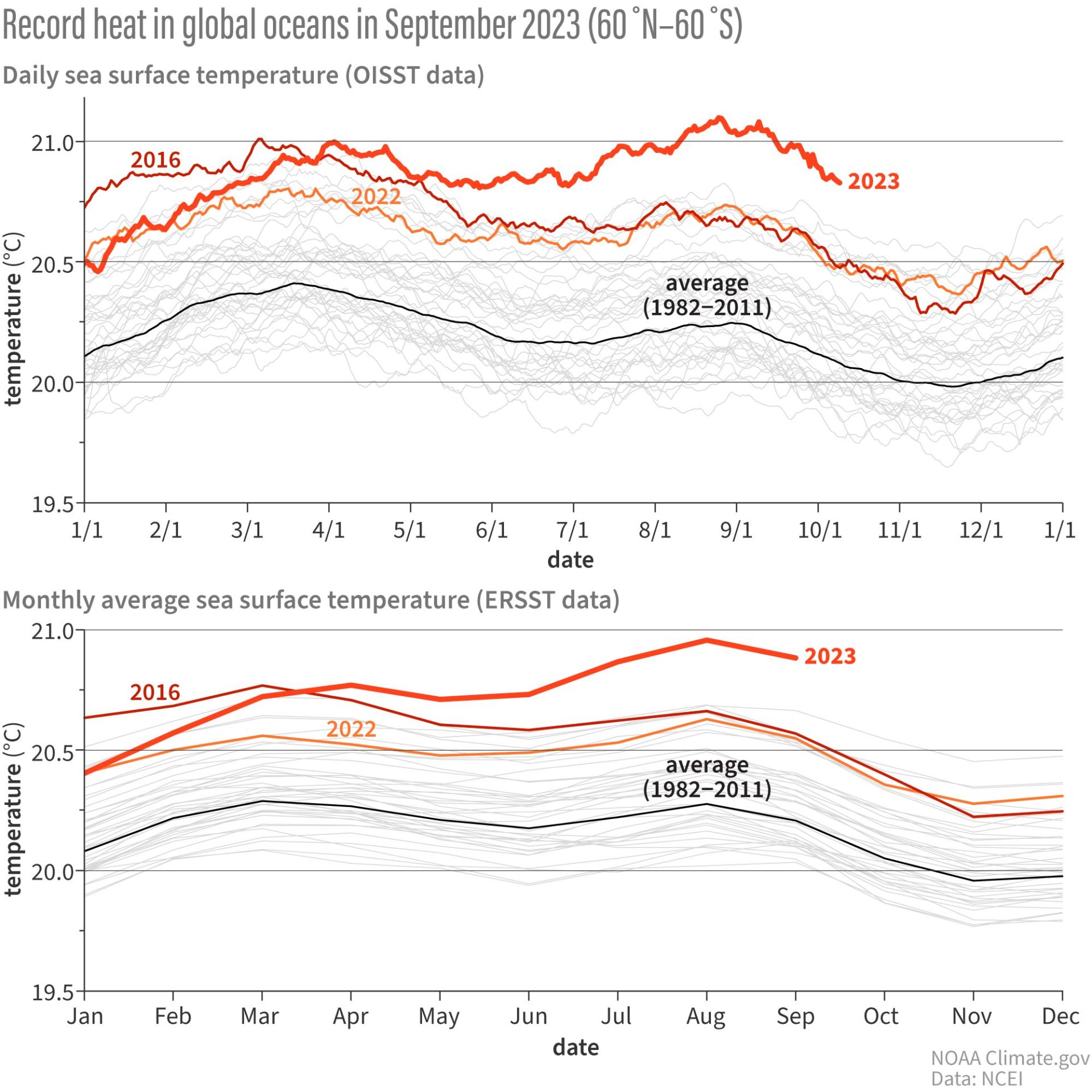
We last featured these graphs, kindly provided by Dr. Boyin Huang of the National Centers for Environmental Information, in May. They show two different datasets, one with daily values and one with monthly averages. Whenever we see something really extraordinary, like the recent records, we want to be sure it’s not a data error. Checking two different datasets provides confirmation that this is a real feature.
The extreme warmth in the global oceans—also noticeable in the map I showed above—means this El Niño is operating in a different world than earlier El Niño events. For example, the Atlantic hurricane season is often on the quieter side overall during El Niño, but this year has already seen an active season, with 18 named storms, as the very warm North Atlantic Ocean has provided lots of fuel.
Cat nap
We’re never going to sleep on the ENSO job! Check back later this month for a post on El Niño and snowfall patterns, and I’ll be back in November to update you on all things El Niño.
This post first appeared on the climate.gov ENSO blog and was written by Emily Becker.